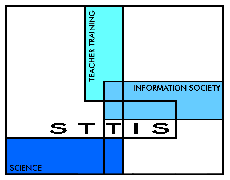|
Learning objectives
Pupils should learn:
|
Possible teaching activities
|
Learning outcomes
Pupils:
|
|
Unit 8I Heating and cooling
Extract from ‘How can we reduce energy waste?’
|
|
• that insulation can reduce unwanted energy transfer
|
• Review pupils’ key stage 2 work on insulators, where
they may have investigated keeping cups of liquid warm or preventing ice
cubes melting.
• Recap year 7 work on the need to conserve energy resources.
Ask groups to discuss the ways used to prevent energy escaping from homes,
eg
loft insulation, heavy curtains, cavity-wall insulation.
• Use models to explain how these methods work, eg
double glazing, draught excluders.
|
• describe and explain how a house can be fitted out
to reduce heat loss
|
|
Unit 9I Energy and electricity
Extract from ‘How is energy involved in doing useful
things?’
|
|
• that useful changes usually involve energy transfers
and transformations
• that the terms ‘kinetic’, ‘potential’, ‘radiation’ and
‘chemical’ are useful when describing energy
|
• Remind pupils of their experience of energy transfers
and transformations in years 7 and 8 with demonstrations of ‘useful changes’,
eg
working a model steam engine, a spring-driven clock, eating food. Help
pupils associate the presence of energy with the different situations in
the demonstrations, eg steam-engine fuel, flame, hot water, movement,
and to use the terms ‘kinetic’, ‘potential’, ‘chemical energy’, ‘heat’,
‘light’ and ‘sound’ as ways of describing energy in such situations.
• Ask pupils to explore a circus of toys and devices that
work by transferring and/or transforming energy. Ask pupils to identify
the source of energy and the use to which it is put. Include a range of
electrical toys and devices.
|
• recognise that energy is routinely converted from
one form to another in order to be useful
• categorise devices on the basis of type of energy input
or output
• explain why electricity is used widely as a source of
energy
• describe energy transfers in everyday changes
|
|
Unit 9I Energy and electricity
Extract from ‘How can we reduce the waste of energy?’
|
|
• that when energy is transferred the total amount of
energy remains constant
• to use flow diagrams to show qualitatively how energy
is transferred/transformed in devices
|
• Introduce the principle of the conservation of energy,
using a range of examples to make the distinction between energy that is
useful and energy that is dissipated and not useful. Ask pupils to draw
flow diagrams, eg Sankey-type, to show energy transfers in everyday
situations, eg home heating, transport, use of insulation.
|
• use flow diagrams as a simple means of energy accounting
|

 Teaching about energy
Teaching about energy

